Related Tags
Andy Powers on redefining the “quintessential Taylor guitar” and the future of scarce tonewoods
Taylor’s President and CEO on why he decided to give the brand’s flagship guitar, the 814ce, an upgraded Builder’s Edition treatment, and why the future of acoustic guitar making might involve a lot more woodworking…

Taylor 814ce Builder’s Edition. Image: Taylor Guitars
This is an ad feature created in partnership with Taylor Guitars
“The 814 is like our quintessential modern Taylor acoustic guitar, right?” Andy Powers is mulling over the road that led him to create the latest and perhaps most interesting Builder’s Edition guitar in the short history of Taylor’s no-compromises best-of-the-best line, and quite why he chose to start messing with the formula of what is widely regarded as the brand’s flagship instrument, the 814ce.
“When I look at a guitar, it’s not that I get bored of the same old guitar, but at the same time, you kind of get that little itch to go, ‘Well, you know, this would be really neat, if we could…’” Powers explains.
“And so there’s always this feeling, almost like a compulsion to try and make something a little better than what it is. It’s like if you go fast in a car, your next thought is, ‘Well, can I go a little faster?’ It’s like as soon as you achieve something, you want to go a little further into it.”
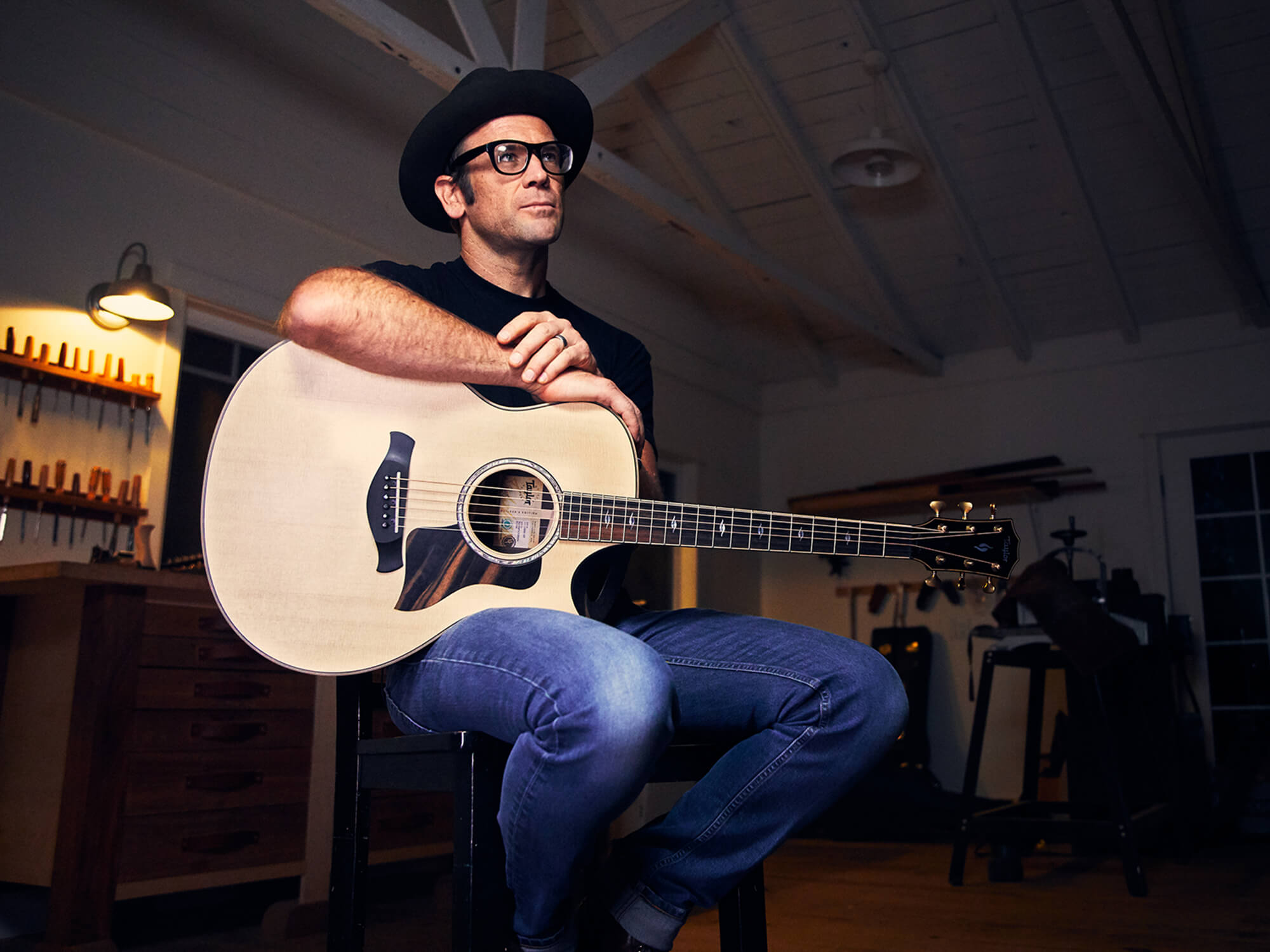
But it’s not as though the 814ce seemed particularly ripe for upgrade to the outside observer – after all, the guitar was recently overhauled with the addition of Powers’ revolutionary V-Class bracing, plus some other refinements including a distinctive rosewood armrest. But it turns out that improving on something that was already at the top of its class was part of the fun.
“I had been thinking about a Builder’s Edition 814 for a while, because I love the woodworking in that guitar,” Powers admits. “That bevelled contour cutaway – that is a crazy piece of woodworking. If you saw the actual part that starts to form that whole thing… it’s almost like building a unibody car or something, where the entire design has to get built around this complex shape.”
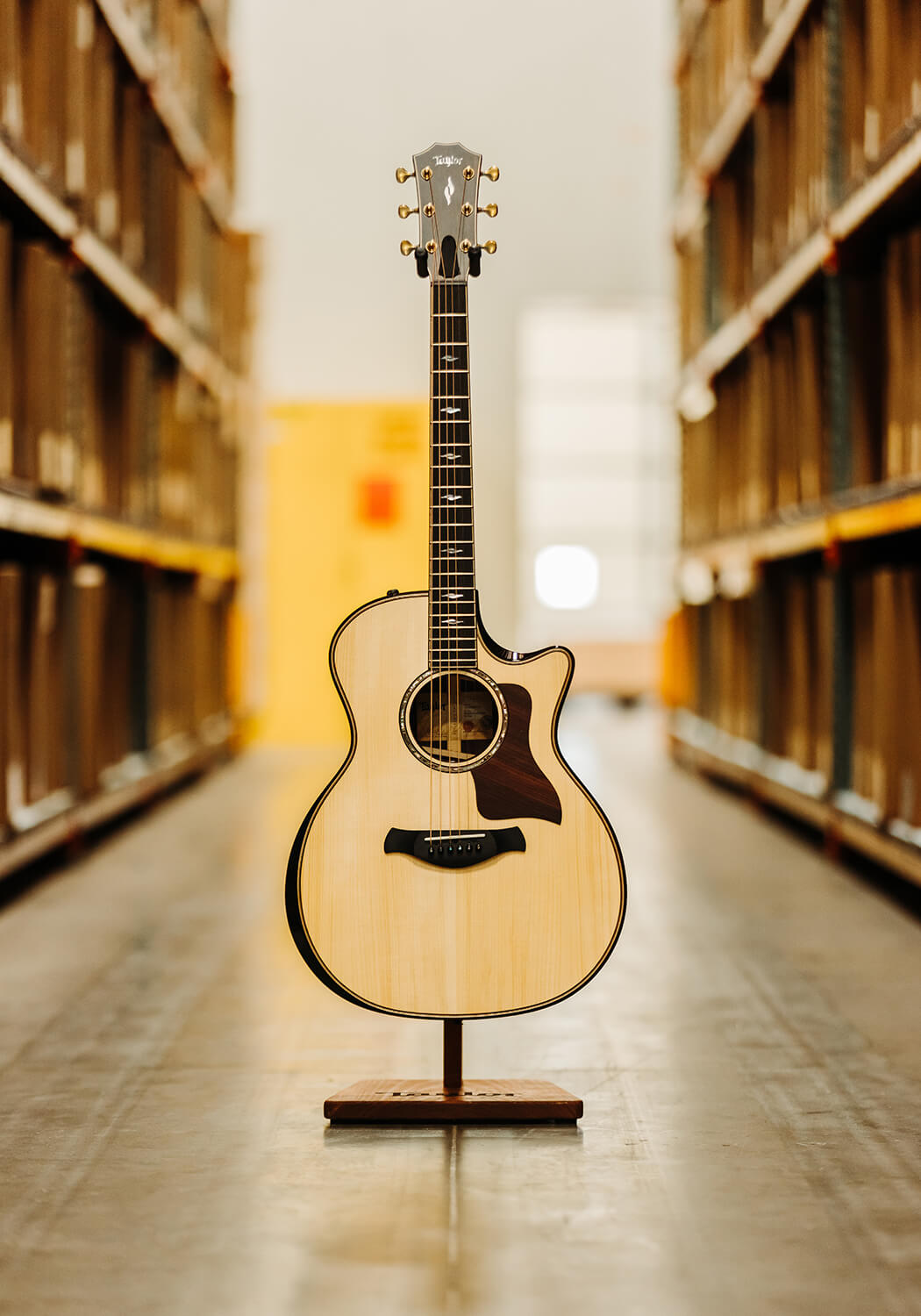
The 814ce is also a spruce/rosewood acoustic – a classic pairing that isn’t often seen in the Taylor catalogue in 2023, such has been the brand’s commitment to using alternative tonewoods. But for this guitar, Powers wanted to stick to the recipe, while also having one eye on the future of that most familiar of pairings.
“The armrest is obviously a really neat part – the bevelled edges, the violin style edge treatment, that’s a neat thing,” he explains. “But one of the elements that I was thinking about was this idea of bringing more woodworking into the guitar. And so that was actually the impetus for using an even more traditional spruce, which is Adirondack spruce in this case. But using it as a platform to start building a four-piece top.”
Power Of Four
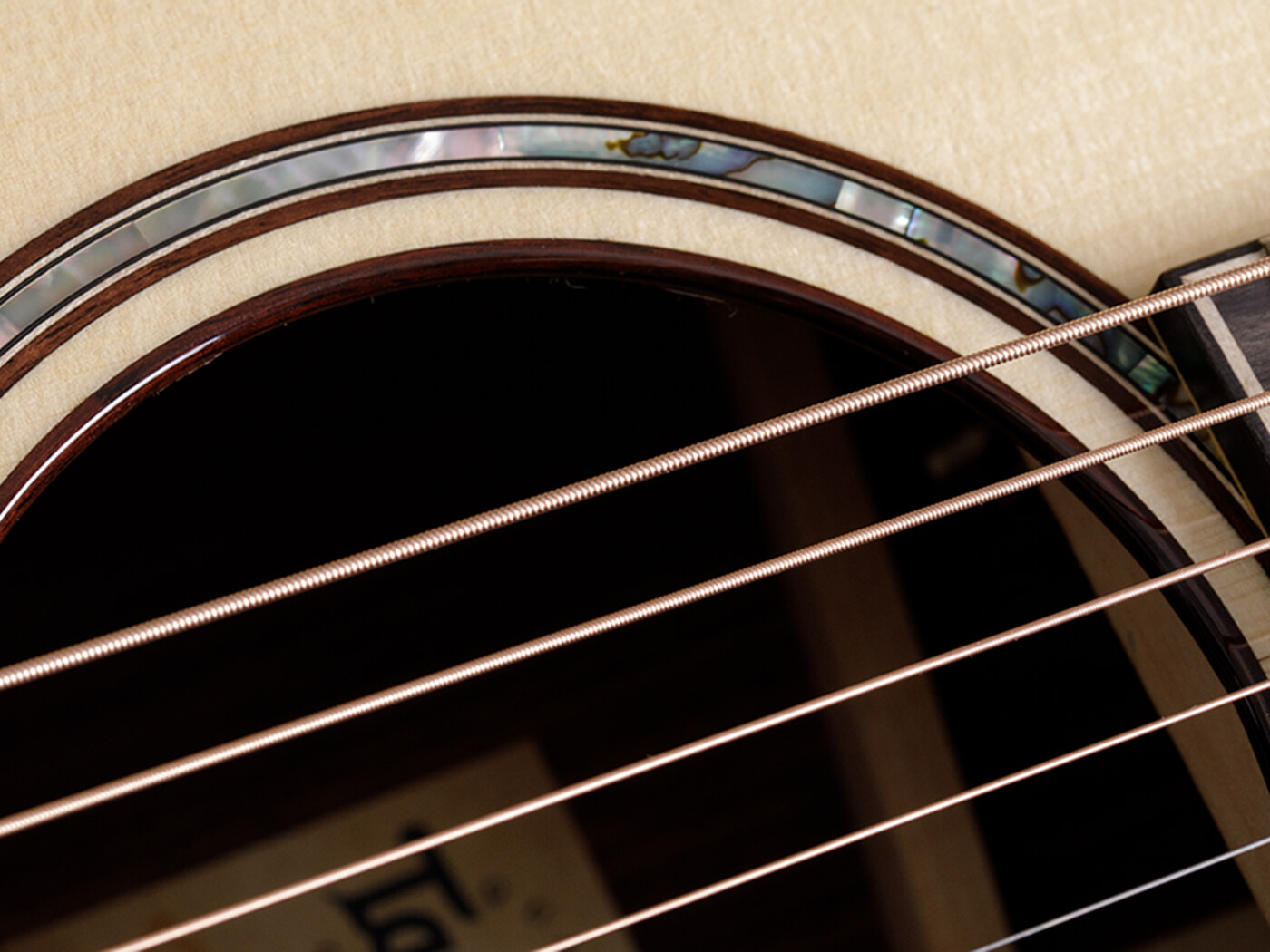
Ah yes, the big eyebrow raiser for the Builder’s Edition 814ce is that its top is made of four separate pieces as opposed to the traditional two. Four-piece tops have been used to save money on materials for many decades, but that obviously wasn’t the primary concern here.
“What it means is that you have to do more work – that’s really what it comes down to,” Powers chuckles when we ask what it meant to have a four-piece top. “I mean, look at the history of building a top – if you are back in the dark ages, where you have handsaws, you’ve got to take a piece of wood, and you split it in half so you can make a symmetrical top. A symmetrical top is really the cool thing, because it creates a very predictable way for the top to vibrate. And we like to work in halves as guitar makers – that’s why even with a violin, that’s a tiny little narrow instrument, and you still want to use a two-piece book-matched top, right? We like symmetry.
“Also, if you’ve got a wide board and you cut it in half, you only have to cut one good clean glue joint for the middle – it’s not much work, right? So you cut your board, you split it in half, which is one saw cut, you join the edges together – you’ve got yourself a top. Well, in this case, you have to make… several more cuts. You gotta run that thing by your sawblade a few times, and you have to do three times as much joinery work.

“So it ends up being harder to do, but if you’re looking at this instrument and going, ‘Well, this is the quintessential modern acoustic guitar form’ – the 814ce – ‘But at the same time, I want to put more and more of this guitar-making, woodworking craftsmanship into it… how do I blend these ideas of traditional tonewoods and modern woodworking craftsmanship? I think that’s a good fit. That’s where I could go with this.’
“And at the same time, you get to enjoy the sound of Adirondack spruce, you get to enjoy the sound of great rosewood, the ergonomic comfort of these bevelled off body edges and this amazing armrest and cutaway – everything we love. It becomes like this unique, almost, conversation piece.”
Eyes On The Future
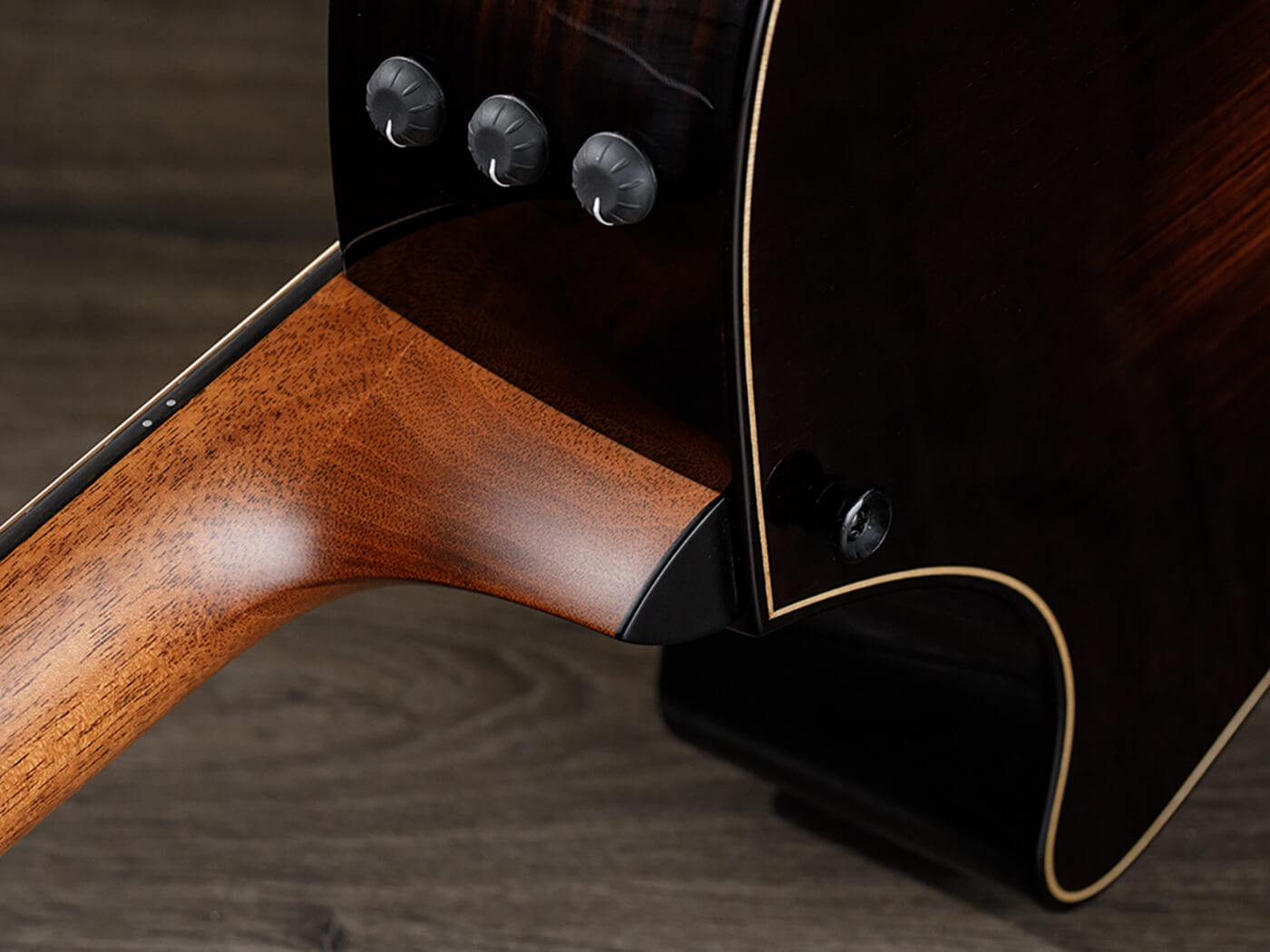
The unspoken part of this of course, is that it’s becoming increasingly tricky to enjoy the sound of Adirondack spruce and other old-growth woods as there are precious few guitar-sized trees left in the world – the four-piece top is more than just an exercise in woodworking, it’s an insurance policy.
“Yeah, part of the conversation is, ‘Why are you going to do more woodworking?’ Right? Why would you go through the trouble of doing extra work? You already have a form that works great! Well, in this case, when we look at the long future of woods, what we can see is that we love using wood for instruments. And for me, oftentimes, alternative materials, what that translates to is alternative sizes of wood, alternative species of wood.”
“And so, when we look at the future of spruce, we go well, we think about the era where trees were six feet in diameter – there are still examples of those, but those aren’t the norm, those are the exception now. And eventually, they won’t even be the exception, and if they are still around, they shouldn’t be cut, because there’s plenty of wood that’s grown for commercial usage.
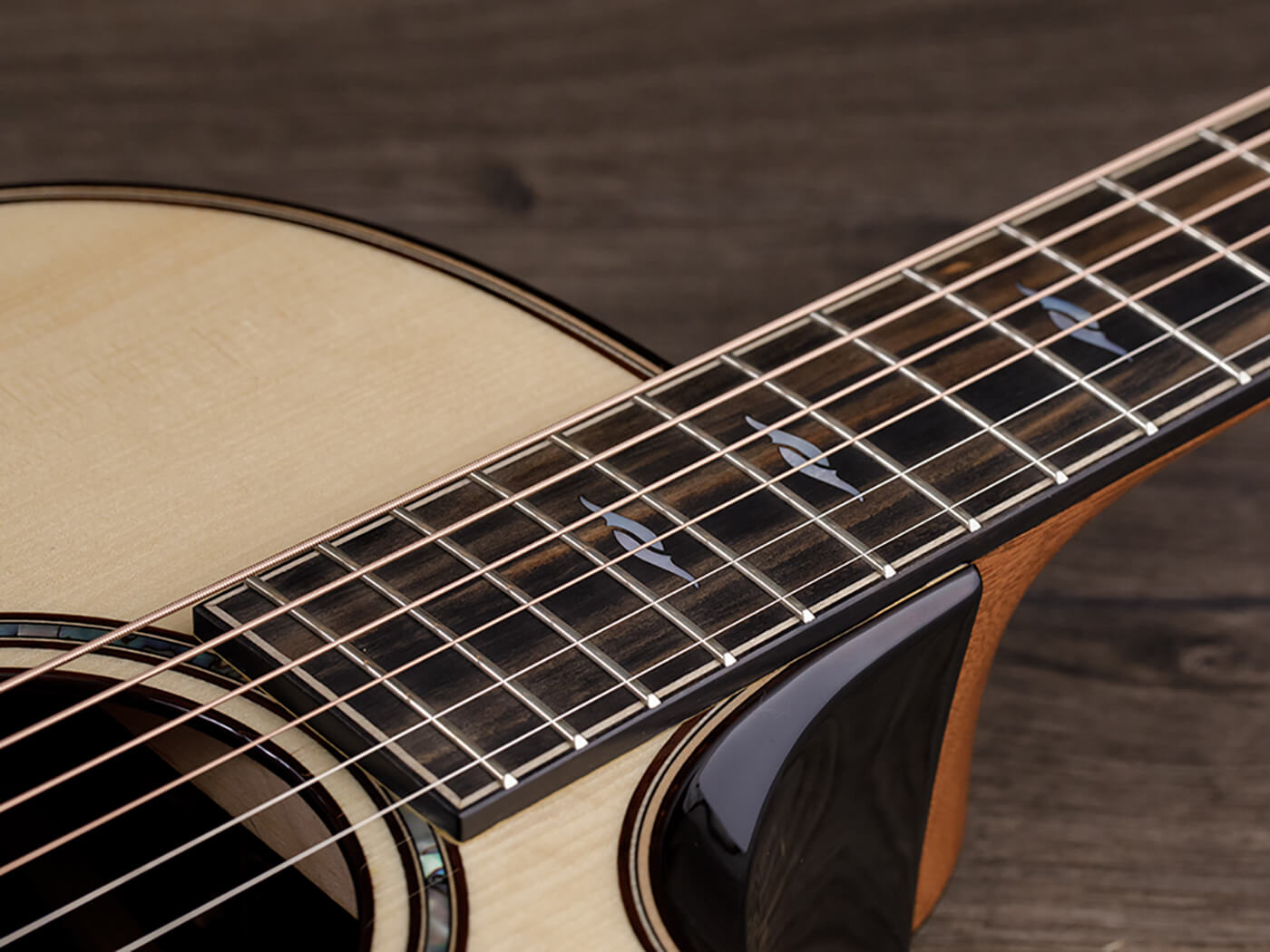
“But the difference between maybe a 100-year-old tree or a 200-year-old tree and a 600-year-old tree?! That’s a good couple of centuries! I mean, we can start planting some of those now, but I don’t think that you’re gonna get your guitar next year!
“So we’re looking at Adirondack spruce and going, ‘Well, this is kind of the interesting prequel of what happens to other spruce trees’. Because those were the first ones we harvested as woodworkers. It’s an East Coast species, an Appalachian mountain range species, sounds great, really, really wonderful spruce to use. But the big ones were cut in such numbers, that even guitar makers started moving away from them in favour of other species.
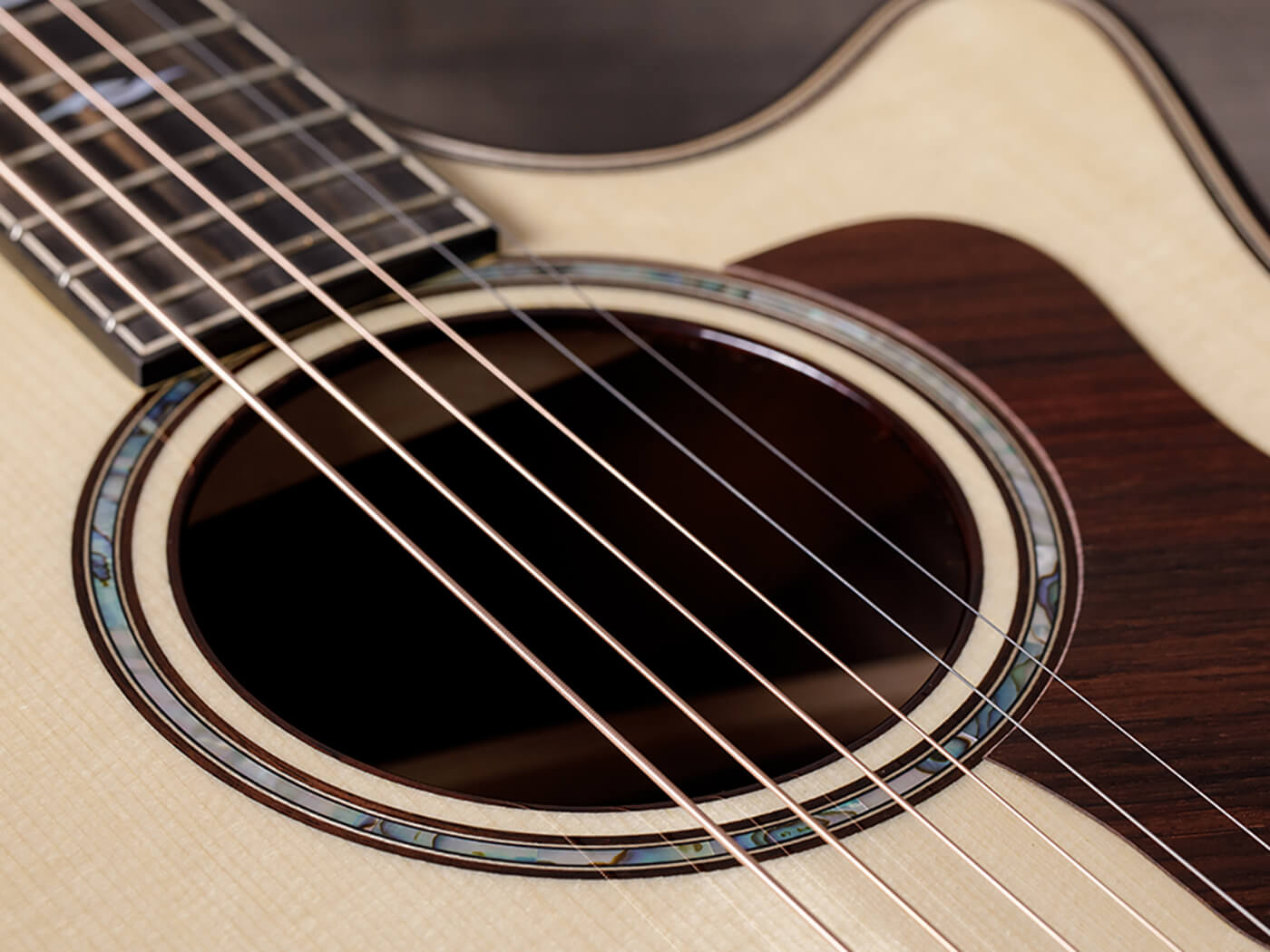
“And then the smaller ones that were left, they grew up a little bigger until they became guitar-sized, and so you saw it come back on the menu for a little bit. But even then you can watch them get smaller and smaller and smaller again. It’s still a great wood to use, but you’re not going to be looking at a tree that’s my height in diameter, you’re gonna look at one that you could literally get your arms around. You literally could hug one of those trees!
“So when I look at the future of where spruces will go, sure, there’s always going to be some exceptions, because you can go find some nice pieces, a handful here and there. But for somebody like me, who wants to build a lot of good guitars and put them into the hands of musicians all over the place? Well, it means we should embrace a future that uses alternate sizes or pieces of wood.”
The Trickle Down Effect

When you see the man in charge of the whole company invest his time and creativity into overhauling the brand’s flagship guitar, the question naturally arises – when he’s doing these Builder’s Edition projects, is he thinking about how certain elements could trickle down to the wider range?
“I guess the answer is yes,” he says, somewhat reluctantly. “So a guitar like the 814 Builder’s Edition… it starts as, ‘This would be a cool guitar to make, so I think I’ll go make it!’ Just as an isolated, stand-on-its-own guitar. In fact, that’s where the label Builders Edition originally came from – I built this guitar and went, ‘This does not match anything that we make!
“And so there is an element of that first and foremost – it’s a great guitar, they play great, they sound really cool, they’re musically useful. And then there are other times where you look at it and go, ‘Hmm, there was substance behind that guitar, there was substance behind those ideas, there was musical utility, there was value’.
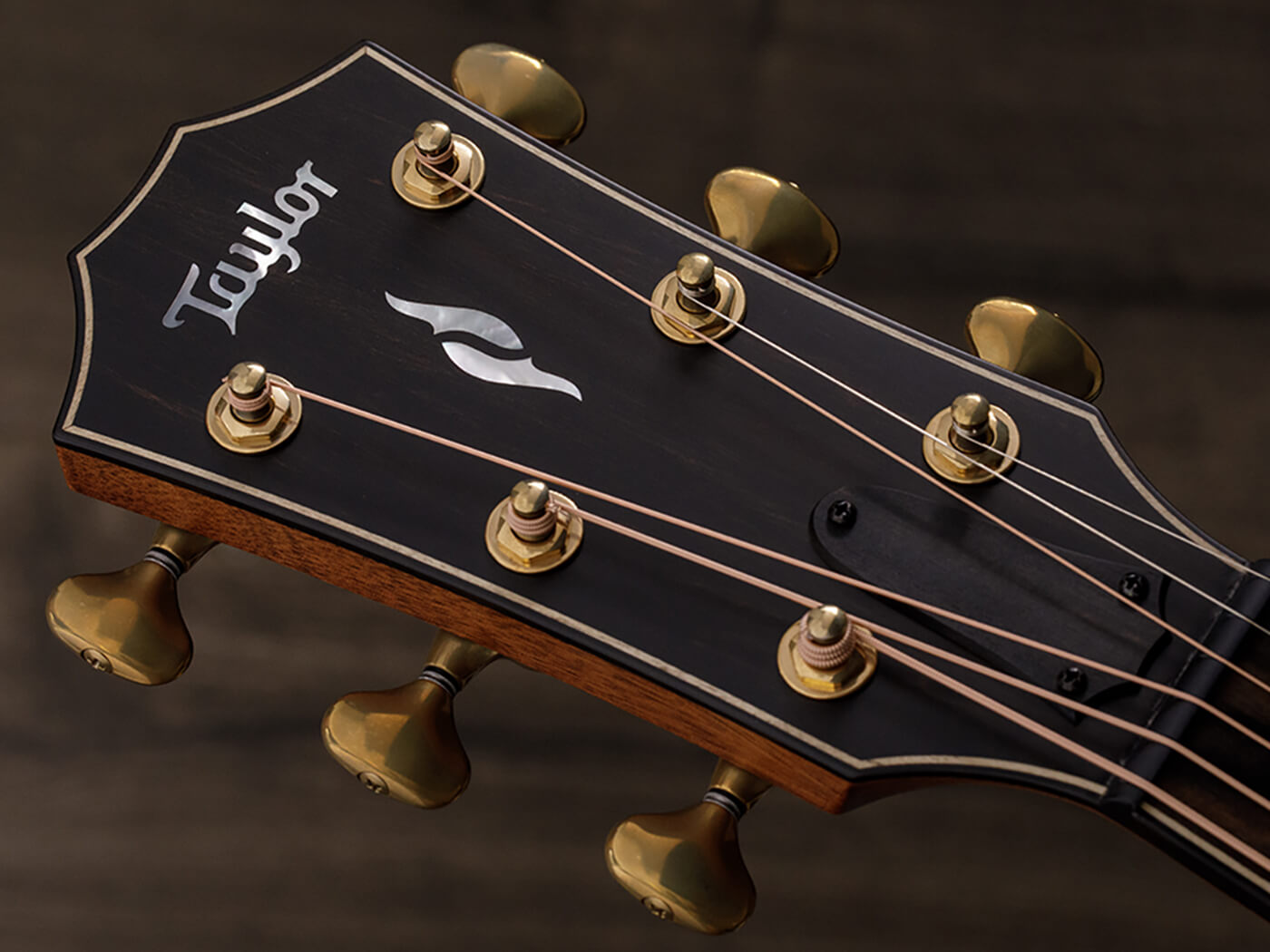
“Some of those ideas might be beneficial to spread a little farther. So something like the V-Class idea, that was actually kicking around for a number of years before I built the very first Builder’s Edition guitar. I tried that idea on I-don’t-know-how many different guitars, different shapes, different sizes, different woods.
“So I know this idea is really something that makes a neat guitar, I’ll just wait until there’s the right opportunity, the right instrument to introduce it, with the right context. But I knew that idea would spread to other instruments.
“And so the way that we end up working is a bit of both of those things. Sometimes an instrument just needs to be built because it’s a great instrument. And other times you have this eye, you can pull out elements and go, ‘Well in the right context, this idea could work well and go this direction or that direction…’”

We wonder if the distinctive new cutaway design seen on the Builder’s Edition 814ce might be an element that could see wider use on future instruments, but with a laugh and shake of the head.
“That element isn’t something that I would see spreading to a lot of the guitars we make, partly because it’s so dang hard!” he laughs. “It’s really tricky to do – I don’t think we could get all our work done if we had to do one of those on every guitar!”
Find out more about the 814ce Builder’s Edition guitar at Taylor.
